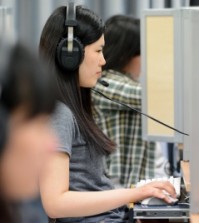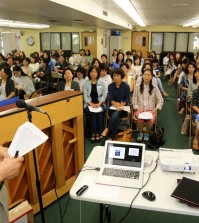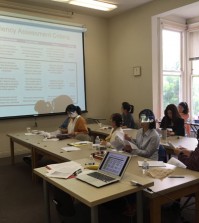- California Assembly OKs highest minimum wage in nation
- S. Korea unveils first graphic cigarette warnings
- US joins with South Korea, Japan in bid to deter North Korea
- LPGA golfer Chun In-gee finally back in action
- S. Korea won’t be top seed in final World Cup qualification round
- US men’s soccer misses 2nd straight Olympics
- US back on track in qualifying with 4-0 win over Guatemala
- High-intensity workout injuries spawn cottage industry
- CDC expands range of Zika mosquitoes into parts of Northeast
- Who knew? ‘The Walking Dead’ is helping families connect
Korean Classes Gaining Students in Irvine
Whether it’s to better understand lyrics of K-pop, or to watch Korean dramas with less help from subtitles, Korean language classes are getting popular in the Southland.
Adult Korean language classes have begun this week in Orange County Korean Cultural Center at Irvine (20 Truman Avenue, Suite 107), and the proof lies in the more than 20 non-Korean students who have signed up for fall classes.
The center started to offer adult Korean language classes just a year ago.
According to the center, most of the students decided to learn the language after first getting interested in Korean culture. The number of students is increasing as the word spreads about the offered classes.
The center also utilizes Korean dramas and Korean food recipes in order to teach its students how to read, write, and speak Korean.
For further information, visit OCKCC.com or write to info@ockcc.com

















DI
October 20, 2013 at 6:59 AM
I need one !
Usa Apa
December 3, 2013 at 2:24 AM
Its great, and I think we are all worried about our education and our professional field. I hope day by day students are more interested to learn Korean language.
https://usaapa.com/
hppy romz
November 18, 2017 at 12:05 PM
Meanwhile, the Southern Hemisphere has a full moon with these same characteristics every April or May. The Southern Hemisphere will see its next full Harvest Moon on March 31, 2018, and its next full Hunter’s Moon on April 30, 2018. And, right now, in the Southern Hemisphere, the time between sunset and each night’s successive moonrise is noticeably long